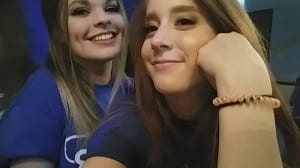This week’s readings were based on the aspect of time and space. One of the things that stood out for me was how Lisa Nelson senses time by beginnings and endings, but how these two aspects can be switched so that the end is at the start and you finish with the beginning. Also that your relationship with space is constantly changing moment by moment.
The activities were all based on relationships with a group of people or just one person. For most of the session we had to look at 5 aspects as to how we could change a movement someone was doing. These aspects were;
- Diminish
- Copy
- Echo
- Augmentation
- Make bigger
The thing that I struggled with the most was making things bigger. I think the reason I struggled was that when your partner or person leading the group already performed a large move you had to make it greater. It was difficult to think on the spot how you can develop it to succeed in the task set.
My favourite part of the session was the last task. The class split into half and with the same concept had to dance for 5 minutes, changing partners or groups. We did this twice and the last time my group were told to have legs like knives and arms like spaghetti. At the end we all came together to do the same movement. I feel like it was strong and interesting to watch, even though all we were doing was repeating the same movement multiple times.
Bibliography
- Buckwalter. M (2010) Composing whilst dancing: An Improviser’s Companion. Madison, Wis. The University of Wisconsin Press. Pages 60-90
- De Spain. K (2014) Landscape of the Now: Space. Oxford: Oxford University Press. Pages 108-113
- De Spain. K (2014) Landscape of the Now: Time. Oxford: Oxford University Press. Pages 108-113
